Research Fellows
Mehdi Ghavami Nejad
Early Stage Researcher at NTUA

Getting acquainted with mechanical concepts at high school, I found dealing with such notions more than fascinating. Hence, I decided to continue my higher education in mechanical engineering. I participated in the university entrance exam and got admitted to the Mechanical Engineering program at Bu Ali Sina University, a state university in Iran.
During the undergraduate years, courses in heat transfer, fluid mechanics and numerical science sparked my interest and made me pay closer attention to these areas.
Following my graduation, I joined Saipa Company to yet gain invaluable experience. Saipa Co. is in close collaboration with well-known car manufacturers, such as Renault and Peugeot-Citroen. After 2 years of gaining experience in industry, I became resolute to expand my understanding of the science I was interested in by continuing my studies.
I was motivated to deepen my knowledge in the field of fluid mechanics and heat transfer, therefore, following a master’s program seemed to be the best choice. Master of Mechanical Engineering at Linköping University in Sweden was a promising opportunity. I got admitted to the program in 2009.
At present, I am working on development of continuous adjoint method on Graphics Processing Units.
Objectives :
• Development of continuous adjoint method for unsteady turbulent compressible flow on Graphics Processing Units
• Implementation of Checkpointing and Reduced Order Modelling, and studying their advantages and disadvantages
• Using the developed method on industrial applications
• Increasing numerical stability while maintaining accuracy in sensitivity derivatives in OpenFOAM
• Development of adjoint turbulence models for bluff body separation for automotive applications
Contribute to Work Packages
I am working on continuous adjoint method with the aim of computing the objective function gradients with respect to the design variables for compressible flow and unstructured grid(2D&3D). So far, I have implemented the code on Graphics Processing Units (GPUs) for taking advantage of the inherent massive parallel processors.
The code that I have developed can be used in shape optimization. For instance, I used the code to optimize the shape of an airfoil (NACA0012) in order to maximize lift and minimize drag. I defined the objective function as the projected aerodynamic force and parameterized the aerodynamic shape by Bezier control points as the design variables.

In this case, I employed mixed precision arithmetics which resulted in over 30% reduction in GPU memory usage and, consequently, higher speed-up due to the increased number of variables in the cash memory.
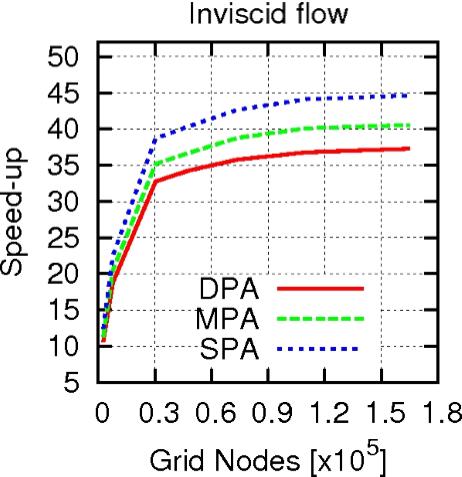
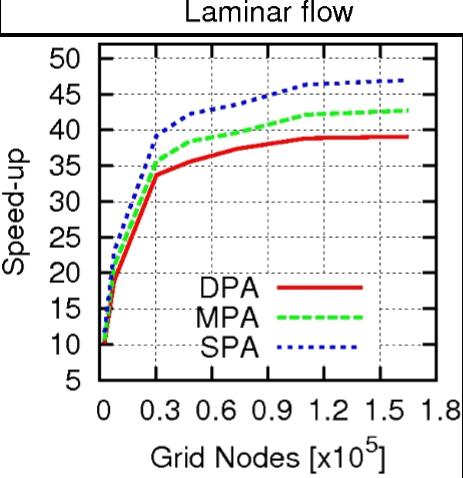

The sensitivity derivatives yielded from adjoint showed very good agreement with those from the finite difference as shown in the picture below.

Optimization on the airfoil yielded the following results :
*More than 100% increase in 𝐶_𝐿 from 0.120 (initial) to 0.264 (optimized ).
*13.5% reduction in 𝐶_𝐷 from 0.118 (initial) to 0.102 (optimized).
*Primal and adjoint solution takes 20 minutes to complete for 30 optimization cycles on a single Nvidia Tesla M2050.

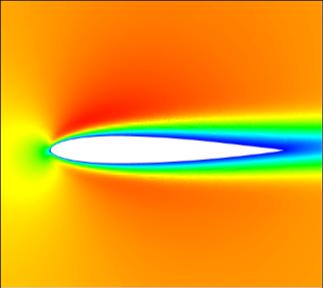


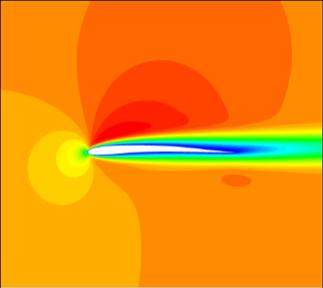

0 < Mach Number<0.34 0.1 < Adjoint Velocity < 3.5
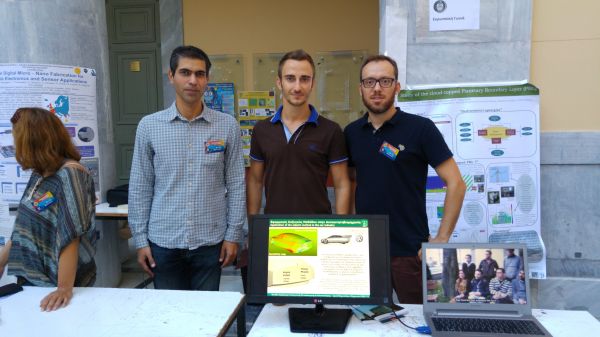
On Sep 25, It was done in collaboration with Christos Vezyris and Flavio Gagliardi in the Science Night of Athens. We prepared a powerpoint presentation about the research being crried out in our group. Since we knew that most of our visitors would be from the general public, we refrained from pure scientific material and tried to make our presentation appealing for people who might not have a scientific background. For instance, we ran a CFD simulation on Darth Vader (the widely known fictional charecter in the Star Wars univers) and included the animation in our presentation which helped us draw attention of many teenagers visiting the venue. When they started asking question about what we were doing, we tried to explain the basic concepts of simulation and optimization and we did our best to refrain from jurgons to make them easy for them to understand hoping to spark their interest in our filed of activity. This experice was invaluable to me since I understood that drawing attention of general public to something that they might not any clue about is both demanding and rewarding.


